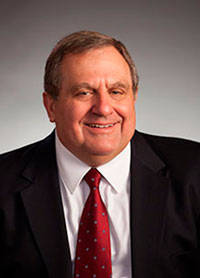These days the mere mention of tax incentives for factories touches off a major firestorm in Seattle and you’d better be looking for an expeditious way out of town.
Not so in Austin where major international corporations are receiving millions in property tax rebates when they build giant new factories creating thousands of jobs.
Similar to Washington, Texas has no income tax. It has a sales tax and relies heavily on property taxes to support city and county governments. Property taxes are high in Texas which is a disincentive for investors.
Costs matter especially when projects total in the billions. Incentives, as lawmakers in Olympia learned, make a difference. A few years ago, the sales tax exemption for machinery and equipment was a deciding factor when semiconductors fabricators decided to build in Clark County rather than in Oregon.
The City of Austin and Travis County rebate property taxes to offset exorbitant plant and machinery costs. They are coupled with an abundance of developable industrial land to make projects feasible.
For example, Tesla is constructing a “Gigafactory” which is equivalent in size to 138 football fields. Apple is building a second Austin campus which is three million square feet and costs $1 billion. Both facilities are expected to employ 5,000 each. Tesla’s county property tax rebate could be worth $60 million. Apple is set to receive $8.6 million.
Samsung Electronics Co Ltd, which already has a plant in Austin, is considering erecting a new $17 billion chip plant that is expected to employ 1,800 people. According to Reuters, “The tech giant is seeking combined tax abatements of $805.5 million over 20 years from Travis County and the City of Austin.”
BAE Systems, a major international defense, aerospace and security company which located in Austin over 65 years ago, is also constructing a major new facility. The company chose not to take the tax incentive even though BAE plans to double its workforce.
Austin is proving to be Texas’ boom town.
Last year, 109 Austin-based companies announced plans to expand operations and 45 companies from outside of Texas plan to move here, KVUE’s Terri Gruca reported in early February. “Despite the pandemic, Texas is the leading destination for companies relocating from other states—-adding a thousand new residents per day.”
Austin Chamber of Commerce President Laura Huffman argues the incentives work. For every job that Tesla creates, we’re estimating there will be four additional jobs that are created and that’s just the supply chain. There will also be jobs in the small businesses that serve both the employees and the businesses around Tesla, Gruca added.
In many ways, Seattle and Austin are similar but each has a vastly different approach when it comes to major companies and incentives.
While the two cities have major world class research universities, an abundance of highly educated and well-training people, and no state or local income tax, there are also major cost-of-living differences.
On the positive side, Seattle’s employers pay better. If you make $60,000 a year in Austin, the equivalent is $66,700 in Seattle.
NerdWallet.com reports overall cost-of-living is 58 percent higher in Seattle. The biggest difference is the cost of housing. For example, a two-bedroom apartment in Austin rents for $1,500 a month, but $2,700 in Seattle. The median cost for a three bedroom, two bathroom home in Seattle is $714,000 compared to $369,000 in Austin.
There is another factor.
Employers go where they feel comfortable and welcome. “When it came to Austin, it was like a romantic feeling, like this is our place,” concluded Darina Garland, co-founder of Scotland-based Ooni Pizza, maker of portable pizza ovens. Ooni is now relocating its plant to Austin.
Don C. Brunell is a business analyst, writer and columnist. He retired as president of the Association of Washington Business, the state’s oldest and largest business organization, and now lives in Vancouver. He can be contacted at theBrunells@msn.com.


